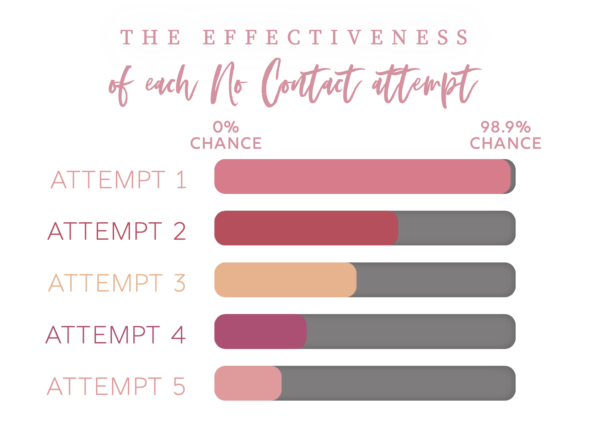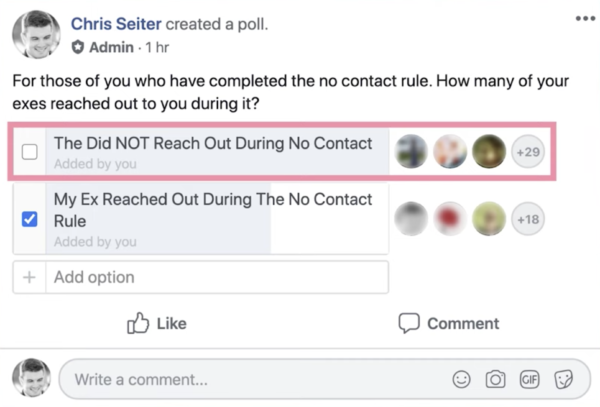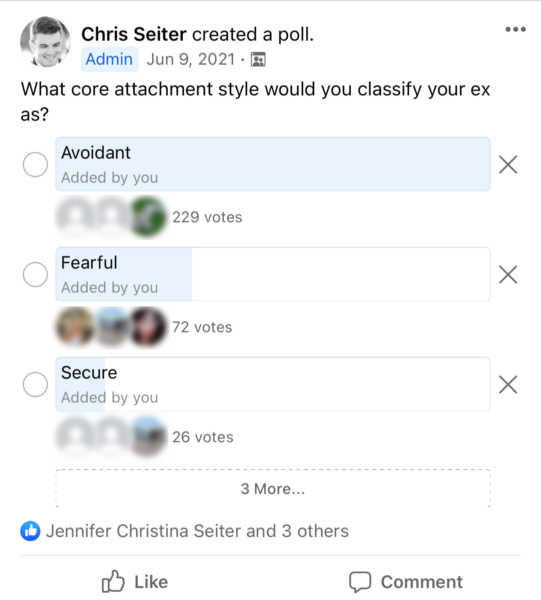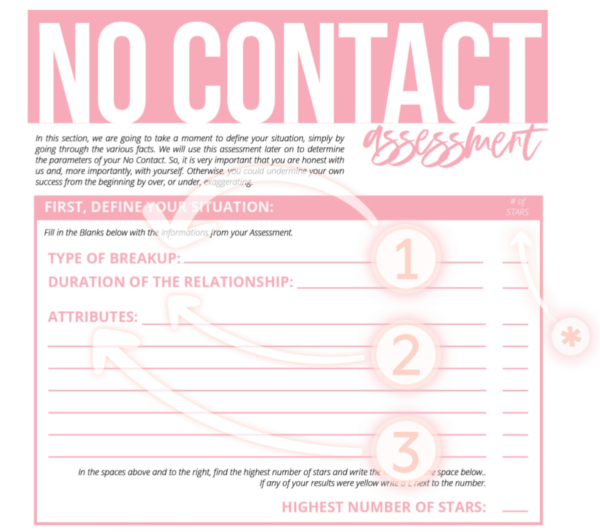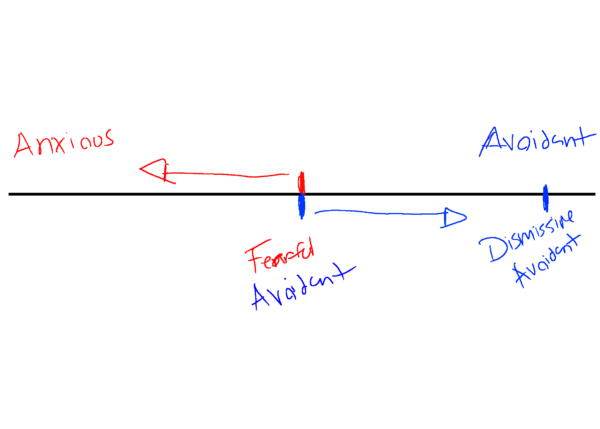I found out exactly when you should reply to your ex during no contact. So, today I’m going to guide you through that process, along with providing specific suggestions for what to say in each situation.
First things first though, I really wanted to overdeliver so I’d also like to discuss:
- The universal misunderstanding people have about the no contact rule
- The situations in which you have to reply to your ex
- Some personal alterations/insights I’ve learned about the no contact rule over the years
Let’s jump right into it.

What Are Your Chances of Getting Your Ex Boyfriend Back?
Take the quizA Few Universal Misunderstandings People Have About The No Contact Rule
Ok, so before I start by listing out the situations in which you should reply to your ex during no contact (and more importantly HOW you should reply to them) I wanted to take you through a few of the biggest misunderstandings people tend to have about the no contact rule.
- Breaking it causes it to become less effective
- Most exes won’t reach out to you
- The time frame you choose is super important
- Just because you are ignoring them doesn’t mean you need to be rude to them
Let’s start from the top.
The Fact That Breaking No Contact Causes It To Become Less Effective
The crux of the matter is that there isn’t an unlimited supply of opportunities to initiate a ‘no contact’ rule, fail it, then restart.
Each time you break the ‘no contact’ rule, its effectiveness diminishes somewhat the next time you try it.
This fact is central to my argument for the rule’s importance post-breakup, especially for those aspiring to win back their ex.
Not necessarily for those not interested in reconciliation, but for those who are, it’s critical not to repeatedly break the ‘no contact’ rule. A few months ago I conducted this study investigating the maximum number of times the ‘no contact’ rule could be violated without negatively impacting the chances of success.
My findings suggested that this number hovers around two times.
Hence, if you’ve transgressed the ‘no contact’ rule two times, the odds of it successfully influencing your ex dramatically decline.
Most Exes Won’t Reach Out To You During It
There’s another big misconception I’ve noticed people often have about the no contact rule. They naturally assume that if they implement this rule with their ex, their ex is more likely to reach out.
But guess what?
That’s not really what happens, according to the feedback we’ve gathered from our audience. Turns out, there’s roughly a 60% chance that you won’t hear from your ex during the 21 to 45-day no contact period you decide on.
If you know anything about the exes we’ve studied, this starts to make sense.
You see, a lot of these exes exhibit what we call dismissive avoidant tendencies.
If you’re not familiar, those with dismissive avoidance are known for, well, not being the first ones to reach out.
It’s typically you who has to make the first move.
This can get tricky because the expectation from the no contact rule is that it’s supposed to make your ex miss you more. And while I’m still a firm believer in that, it doesn’t necessarily mean they’ll be knocking on your door begging for you back or even shooting you a text.
It’s more like they go through this separation elation period and potentially start to regret their decision to break up with you.

What Are Your Chances of Getting Your Ex Boyfriend Back?
Take the quizBut here’s the thing, it’s an internal process. It’s not something you’ll visibly see or easily pick up on.
The Time Frame You Choose Is Super Important:
The next major hiccup I see people having with the no contact rule has to do with deciding on the timeframe.
Like I mentioned earlier, you’ve got a variety of options when it comes to this.
We usually advise our clients to choose between:
- A 21-day rule
- A 30-day rule
- A 45-day rule
Now, we used to rely on these really intense calculations to help you nail down the ideal timeframe,
(DO NOT DO THIS!)
Lately, I’ve found that matching it with your ex’s attachment style is a much simpler way to go about it.
Let’s break it down.
Anxious/Fearful Avoidant Ex
If you’re dealing with an anxious ex or a fearful avoidant ex, a shorter no-contact period is usually the way to go.
You might be asking, “Why?”
Well, typically, longer periods of no contact are more likely to trip you up than give you a leg up. The 21-day rule? It’s just about right for someone who has even a hint of anxiety in their makeup, and this includes those who are fearful avoidant.
The Secure Ex
Now, let’s talk about the 30-day rule. This one’s a good fit if you’re pretty confident that your ex has a secure attachment style. If you reckon that your ex handled the breakup with a sense of security, they’re managing the post-breakup phase well, and generally, they seem to have a secure attachment style, then the 30-day rule is probably your best bet.
The Dismissive Avoidant Ex
Last but not least, we have the 45-day rule. This one’s reserved specifically for dealing with dismissive avoidants. Our research suggests that longer no contact periods can not only make you seem like you’re moving on, but they can also persuade your dismissive avoidant ex that you are genuinely moving forward. If there’s one thing we know about dismissive avoidant exes, it’s that they typically start missing you only when they believe that you’re really moving on.
Just Because You Are Ignoring Your Ex Doesn’t Mean You Are Trying To Be Rude To Them
Without question, one of the biggest missteps I see people make with the no contact rule is the assumption that ignoring your ex equates to being rude to them.
Here at Ex-Boyfriend Recovery, we’re well known for introducing a concept called ‘ungettable’.
Heck, I’ve even written an entire book on the subject.
(I promise this isn’t a promotion for the book. I’m not even linking to it.)

What Are Your Chances of Getting Your Ex Boyfriend Back?
Take the quiz‘Ungettable’ can mean various things to different people, but it’s often interpreted as embodying a persona that’s, well, quite literally ungettable. People usually aim to embrace this ‘ungettable’ vibe during the no contact period.
But here’s where the misunderstanding creeps in.
Striving to become ‘ungettable’ sometimes leads people to act somewhat rudely towards their exes.
The truth is, the no contact rule isn’t about being mean or rude.
Instead, it’s about outgrowing and evolving beyond your past relationship.
And achieving this doesn’t require you to be rude, especially in situations where you’re compelled to break the no contact rule, which is essentially what we’re discussing here.
The Situations In Which You Have No Choice But To Break No Contact
What I did was sift through the basic scenarios in which you’d have no choice but to break the no contact rule. I discovered these situations fall into roughly five categories.
- Sharing Children
- Sharing Pets
- Item Exchanges
- Living Together
- Working Together
My goal is to not only enlighten you about these categories but also guide you on how to navigate them. It’s crucial to remember that ignoring your ex doesn’t equate to being rude to them.
Category #1: Sharing Children
You’ll have no choice but to break the no contact rule if something urgent arises concerning shared children.
This tends to be less common, usually seen among clients who are trying to win back their ex-spouses.
Sometimes, you’re in a position where you share children with the person who broke up with you. If you’re observing the no contact rule, it theoretically means you can’t discuss the children with them.
But that’s not how it works.
In these cases, you’re typically in a state of ‘limited no contact’ because you must discuss matters related to the child.
However, exes can be savvy—they may realize you’re ignoring them and use the children as a pawn to get a response, especially if there’s a history of you breaking the no contact rule to talk about the child.
An amendment I introduced a few years ago stipulates that there must be an actual urgent issue with the child—like an emergency room visit, dentist appointment, or a doctor’s visit.
These are valid reasons to break the no contact rule to discuss your child. But how should this interaction unfold?
The guiding mantra is to ‘keep it strictly business’. Keep the conversation focused on the matter at hand.
If they try to switch the topic or engage in small talk, either don’t respond (if you’re texting) or acknowledge it without actively participating.
Category #2: Sharing Pets
The second prominent category that necessitates breaking the no contact rule is when something urgent occurs with shared pets.
While pets are a step down from children, we often acquire pets during relationships, leading to disputes about who gets to keep them post-breakup.
The same rules that apply to shared children also apply to shared pets.
Keep the conversation strictly about the urgent pet-related issue and then promptly return to the no contact rule.
You’ll notice a recurring theme as we proceed through this list: keep it strictly business, then return to the no contact rule. This holds true for the next category as well, which involves exchanging items.
Category #3: Item Exchanges
Here’s my rule on item exchanges.

What Are Your Chances of Getting Your Ex Boyfriend Back?
Take the quizIf you possess something of theirs that holds no significant value, such as a toothbrush or a t-shirt, it’s not necessary to reach out to them and say, “Hey, I have these items. Come get them.”
I’d recommend waiting until the no contact rule is over so that you have a justified reason to see them post-breakup.
That being said, if your ex insists on getting something back, you’ll have no choice but to break the no contact rule to facilitate this exchange.
This situation presents an interesting opportunity because often, you get to see your ex in person. The best way to handle this is to keep it strictly business but maintain a pleasant demeanor.
Return the items, engage in a bit of small talk, and then move on with your day, ensuring there’s no carryover.
Category #4: Living Together
Then there are scenarios where you live together.
This is arguably one of the most challenging situations to manage during the no contact rule due to its complexity.
It practically prevents you from maintaining proper no contact.
If you share children, pets, or need to return items, you can still have prolonged periods of silence.
However, when living with your ex, whom you see every day, these long bouts of silence are nearly impossible. This situation has its pros and cons.
A significant pro is that you can craft the narrative you want.
For example, you can dress up and go out with friends post-breakup—this will likely lead your ex to worry that you might be on a date or moving on quickly.
Subtly projecting that you’re moving on is crucial, especially given that many exes we study at Ex-Boyfriend Recovery exhibit dismissive avoidant tendencies.
Such individuals won’t feel comfortable missing you until they believe you’ve moved on from them. However, the top advice for people living with their ex is to keep interactions short and sweet. Ideally, keep conversations within the 5-10 minute range and remain pleasant before moving on with your day.
If financially feasible, it’s crucial to attempt to move out. We’ve observed greater success among clients who took the step of moving out when living with their exes. This likely ties into the dismissive avoidant quality I mentioned earlier—giving the impression of moving on.
We also recommend restarting the no contact rule—this time, not a limited version, but a full 45-day period.
Category #5: Working Together
Then, there are cases where you work together.
Much of what I said about living together applies here too.
The main difference is that you can’t just quit your job and move on.
Hence, it’s essential to keep interactions short and sweet and do things that suggest you’re moving on from your ex. Engage with other coworkers—not flirtatiously—but to show that you’re not entirely focused on your ex.
Aim to give your ex the impression that you’re not as affected by the breakup as you might truly be.
This ties back to the dismissive avoidant mentality—such individuals don’t feel comfortable missing someone until they perceive that person to be unavailable or moved on.
A Few Extra Alterations
There are a few additional nuances that I’d like to add to this discussion, and I apologize if they appear a bit confusing.
However, I believe they are crucial to address.
The first one primarily concerns the fearful avoidant attachment style.
A Word On Fearful Avoidants
I’ve been studying the impact of the no contact rule on individuals with this attachment style.
I can confidently assert that a shorter period of no contact is advisable for those with fearful avoidant tendencies.
Such individuals are somewhat rare due to their dual core wounds.
Essentially, they are continuously triggered by two factors:
- the fear of abandonment, which ignites their anxious side
- the fear of losing independence, which triggers their avoidant side.
With the no contact rule, you risk potentially triggering their anxious side.
We know that if a fearful avoidant’s anxious side is triggered and not addressed, they will linger in their fear of abandonment or avoidant trigger for longer periods than their anxious trigger.
Therefore, when implementing the no contact rule, it’s critical to consider these factors.
That’s why we recommend a shorter, 21-day no contact rule for those with fearful avoidant tendencies.
Outgrowing Your Ex
An important addition to this is the principle of ‘outgrowing your ex’. The no contact rule will not be effective unless you fully embrace this idea.
If you browse through our success stories, either on our community page or the free access page on our website, you’ll notice a common thread among people who’ve successfully reconciled with their exes:
They all mention outgrowing their ex during the no contact rule.
Hence, it’s of paramount importance to achieve a state where you feel like you’ve moved on from your ex.
This approach is especially effective for those with dismissive avoidant tendencies.
Therefore, getting to a place emotionally where you no longer desire your ex back is crucial.
Even if you get other aspects of handling the no contact rule wrong, as long as you’re outgrowing your ex, you’ll start to notice that things begin to fall into place for you.
